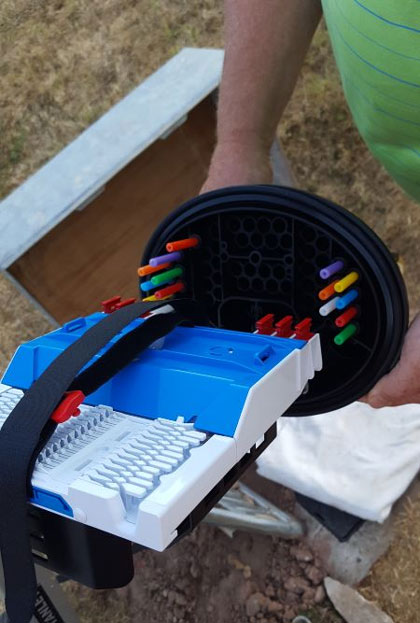
Splice Closures
Splice closures (sometimes called splice bullets) are hard plastic, waterproof boxes with multiple entry/exit points for different sized fiber cable. They are used whenever you need to connect other fibers to your incoming main backbone fiber. For instance, to splice in drop cables to go to nearby houses, or to splice in another fiber cable to continue the backbone fiber, but with a smaller number of fibers.
Closures are typically themselves enclosed in an underground vault or pedestal, but some aerial designs will have closures attached to the steel messenger wires and suspended between or on telephone poles.
Closures will have splice trays inside them to allow the organization of all the splices. Closures can be designed to splice just a few cables together as shown above, or be designed to splice many drop cables as shown below (the colored tubes in the picture are microducts, no cables have been blown through them yet).

Image source: Michaelston-y-Fedw Internet CIC
Fusion Splicing
Whenever you reach a branching point in your network layout you will need to connect different fibers cables to each other. This is done using a fusion splicing machine. With the machine, you get down to the individual fibers, stripping off its 125 µm cladding, and inserting the two fibers into the machine and the machine aligns and melts the fibers together. The resultant connection is very low loss optical connection (less than 0.2 db loss).
Fusion splicing machines are expensive (in the $5K to $10K range), but are a worthwhile investment to purchase to not only build your network, but also to maintain and grow the network.
Operating a fusion splicer, as well as learning all about fiber cable preparation and splice closure organization, is a technical job, but one that any reasonably handy person can learn. Organizations like The Fiber Optic Assciation will readily train you on how to work with splicers and fiber optic cable.
